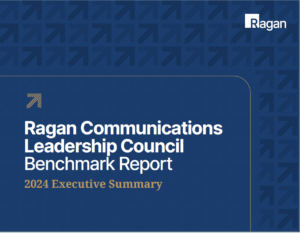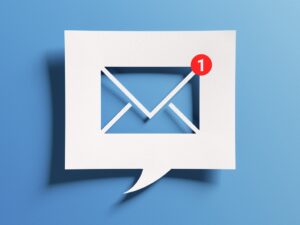Curating the week in wellness Sep. 6–Sep. 10, 2021: Replicating watercooler serendipity, distilling DE&I data, and more
The week’s essential content and fresh industry pickings for those dedicated to employee well-being.

Greetings, wellness, HR and comms pros!
We hope you enjoy this week’s collection of thought-provoking articles, savvy tips and relevant takeaways.
As always, please get in touch with any ideas, suggestions or feedback on how we can serve you better or cover topics that are near and dear to your heart. We are grateful for all the excellent work you do.
1. Are serendipitous watercooler chats a thing of the past?
Why, exactly, are business leaders so eager to get everyone back into the office? Reasons vary, but many are driven by some variation of “recapturing the magic of spontaneous encounters and collaboration.” The New York Times dives into this theory, which does have some merit—though probably not as much as execs such as JP Morgan’s Jaime Dimon tend to believe. As he told shareholders recently, “Remote work virtually eliminates spontaneous learning and creativity because you don’t run into people at the coffee machine.”
But is this true, or just more of an assumption?
According to the Times, “The data shows that in-office work is helpful at one part of the creative process: forming initial relationships, particularly with people outside your normal sphere.” Of course, U.S. workers haven’t had much opportunity for random coffee machine chats since the pandemic began, but the Times points out that the internet has profoundly changed what workplace collaboration, innovation and creativity looks like.
The Times cites examples of how digital connectivity can still fuel innovation:
“Bell Labs is the classic example; it gathered scientists across disciplines in a building designed for chance encounters. But now, it’s much easier for people to collaborate and to learn about work being done elsewhere.
One study, for example, found that mathematicians were more likely to cite mathematicians they knew, and who lived nearby. But by 2004 or so, with the rise of easily accessible internet and online research archives, the geographic advantage had disappeared. Since then, what has tended to matter for scientists has been not their location, but the fact of knowing one another.”
It adds another key finding about pandemic-era comms:
“They found that while working remotely, individual workers were more productive than before, and communicated more with people at different levels of the company and with close colleagues. But they communicated 21 percent less with their weak ties.”
The gist of the research affirms the undeniable power of in-person collaboration, and yet the data shows that strong bonds can be formed via internet, too. However, forging and nurturing meaningful connections in a virtual setting takes effort—and apps. The piece suggests:
“For remote workers, there are apps to try to foster these connections. Donut Watercooler, on Slack, encourages small talk. Some companies have been hosting virtual book clubs or cooking classes. Spark Collaboration randomly matches employees for one-on-one conversations, and organizations have been doing the same thing with Zoom. Online tools like Airmeet and Gather allow people to mill around and run into others — all virtually.”
What’s the right answer? What’s the right balance? That’s a decision every company must make—hopefully not one made lightly or without ample employee say in the matter.
2. Is your company commenting on Texas’ abortion law?
Lyft is jumping into the fray, and several other Texas-based companies are offering relief to affected workers.
Lyft is speaking up because the legislation “also allows individuals to take civil action against anyone, not just medical providers, who ‘aids or abets’ a restricted abortion, which legal experts say could include rideshare drivers who give a person a ride to an abortion procedure, potentially whether or not the driver knows that is what’s happening.”
Lest you think this is just a “Texas situation,” CNN notes that several other states are considering similarly restrictive abortion laws. So, it’s understandable if your company hasn’t decided on whether to comment on such a divisive issue—but you should start planning on how you plan to handle a similar law if it comes to your state.
3. Distilling DE&I data.
HR Dive features insights from PwC’s chief purpose and inclusion officer, who shares tips on capturing meaningful metrics. Her guidance includes:
- Data should build a culture of belonging.
- Data should measure accountability.
- Transparency is essential.
The piece explains:
“For business leaders it’s incredibly important not just to properly gather the data, but to also communicate why you’re collecting data with your people. So that they understand your motivations and what you plan to do with the information.”
4. Lessons on reporting CSR, DE&I, and ESG progress.
If you’re struggling to report on your company’s sustainability initiatives, employee support programs or philanthropic ventures, have a look at these heavy hitters’ recent reports:
- Fifth Third Bancorp
- Dow
- Vistra, which has announced new ERGs
- T-Mobile
- Gildan, which is showcasing progress via a Q&A with execs
- P&G, which is highlighting its commitment to diverse suppliers
5. A plea to reconsider ‘weight-based’ wellness programs.
Self has published an open letter, of sorts, signed by “Your Fat Friend”—who says weight-focused initiatives drive “stigma and inequity” and “can cause real harm.”
The author writes that, “With both weight stigma and body dissatisfaction on the rise over the last 16 months, workplace wellness programs are poised for a post-pandemic comeback.” However, “returning to in-person work can also mean returning to co-workers who are newly self-conscious of their size. It may also mean returning to anxious diet talk and overt weight stigma.”
The author voices concern about well-meaning schemes such as Whole Foods’ (voluntary) Healthy Discount Incentive program—which gives participating employees up to 30% off company groceries who meet “a range of biometric benchmarks including BMI below a certain threshold, no nicotine use, low blood pressure, and low cholesterol.”
Self makes the case that weight-focused contests and programs are unfair, at best. They can also “compound existing inequities.” The author writes:
“First, workplace wellness programs that focus on managing employees’ weights may directly increase the wealth gap between thin people and fat people. While the numbers vary, studies have repeatedly found profound gaps in income between fat and thin employees, with some research showing people with only slightly overweight BMIs making up to $9,000 less annually than their thinner counterparts.”
There’s a racial component to be explored, too.
“And according to the Centers for Disease Control and Prevention, Black, Latinx, and low-income Americans are among those most likely to be fat, which means that programs like these can disproportionately impact communities that are already marginalized.”
All this to say, it’s probably wise to shelve that workplace weight-loss contest. As the author puts it:
“Life is hard enough for workers of all kinds. Weight-focused workplace wellness programs could harm employees’ mental health in the short term, their physical health in the long term, and their pay in the immediate future. As we return to in-person work, let’s make the choice to decrease stigma and increase equity. Let’s leave workplace wellness programs in the past where they belong.”
6. A sweet financial wellness startup.
TechCrunch reports on HoneyBee, “a startup that aims to help companies provide access to financial support to their employees.” This buzzworthy new biz is worth a look, as it “is on a mission to give employees—and their families—free access to financial support in the workplace as a benefit.”
TechCrunch explains, “That support could come in the form of employer-sponsored ‘no-cost rainy day funds’ and on-demand financial therapy with the goal of ‘creating a healthier workforce environment.’”
The piece says HoneyBee “aims to give HR and DE&I leaders that say they are committed to creating an equitable and inclusive culture a way to provide access to financial tools and education to help improve their employees’ financial health.”
Sounds pretty sweet to me!
7. Streamlining onboarding for hybrid workers.
HR Executive offers six tips to keep in mind, including:
- Start onboarding long before a new employee’s first day.
- Emphasize personal connection over paperwork.
- Think about both people and places.
- Think beyond the first 30 days.
- Build cultures of feedback collection and implementation.
8. Taking a more ‘tailored, contextual’ tack to wellness.
LawyersWeekly serves up a timely reminder that successful wellness programs must be personalized to suit your unique workforce.
The piece notes that “54% of employees feel overworked and that 62% of calls and meetings happen in an unstructured way, causing people to feel overloaded and overwhelmed.” This new dynamic calls for a fresh approach to wellness initiatives, too. The piece says to start small—and to get specific with offerings:
“Organizations need to be investing in hybrid working skills, actively providing education about the importance of sleep, exercise, rest and nutrition. They also need to be developing mature interpersonal skills, both at the formal, executive level and with informal leaders who are more attuned to workplace sentiment and are able to navigate difficult conversations and new scenarios with empathy.”
The piece also touts the importance of bolstering employees’ mental health, resilience and self-care:
“Hybrid work provides an opportunity to improve the way we work and support teams. These small changes include discussing how to collaborate, encouraging employees to block out time, respecting employee break time, communicating with employees about the importance of rest, breaks, hydration and nutrition.”
It’s also high time to beef up those EAPs:
“Companies need to evolve their Employee Assistance Programs to be more contemporary, to be more able to support hybrid workplaces, to support clinical challenges, and make coaching available 24/7. They need to support 24/7 access models, drive demand with employees, address broader psychosocial needs, like coaching and integrate digital support to enable scale.”
9. Tips to tidy up your workspace.
CNN offers guidance on decluttering your desk—and possibly your mind—along with a slew of handy organizational gizmos that might make your life a bit easier. Or at least slightly less chaotic!







